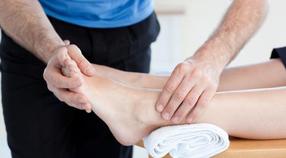What to Expect
Physical therapy is a noninvasive approach to the treatment of physical injuries. We work in assisting people to reach their highest functional status based on their desired goals. Goals can be as simple as full range of motion in the ankle after surgery and as advanced as completing a triathlon. Our main objective is to remove the factors contributing to the injury instead of just masking the symptoms.
|
|
|



